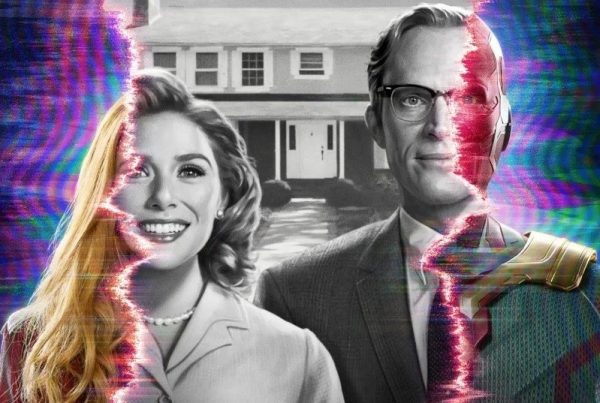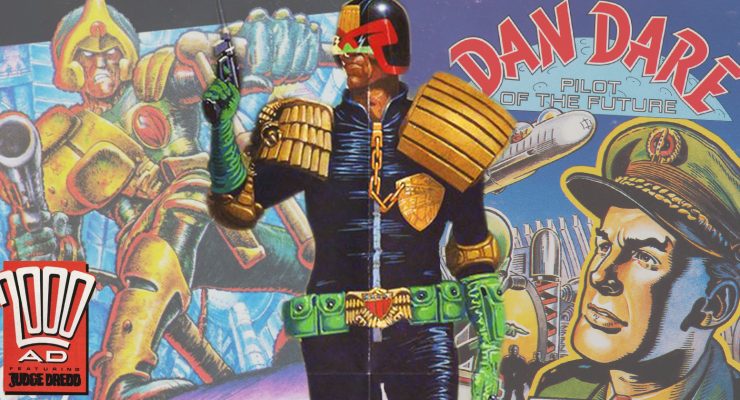Martin Carr reviews the first episode of Marvel’s WandaVision…
There is something deceptively simple about WandaVision, which will wrongfoot audiences from the outset. On the surface this is a picture-perfect picket fence pastiche of Americana, defined by outmoded gender roles, canned laughter and two-dimensional farce. What makes it intriguing is the idea of placing two franchise favourites within this contemporary society, then watching them play house.
They come with the blockbuster baggage of numerous big screen outings and Marvel’s not insubstantial back catalogue. However, by forcing them to assume different personas in a society defined by outmoded values, WandaVision throws audiences a curveball. Subversion is the main aim of this opener where everything people assume gets disregarded, rewritten and retrofitted using a Fifties story telling aesthetic. This statement of intent extends to extraneous characters, who make minimal impact beyond our central duo, apart from Kathryn Hahn’s Agnes. Her nosy neighbour cliché is completely on point and pure plot device, while everyone else is condensed down to two-dimensional archetypes.
Where WandaVision hints at something deeper is through its treatment of big business. There are veiled side swipes at mass media and a quantity over quality mentality. There are also hints that this I Love Lucy picture perfect reality is not what it seems. Instances are only fleeting and narrowly avoid upsetting the carefully constructed tone elsewhere, but as with everything else it feels intentional.
Paul Bettany and Elizabeth Olsen give hyper-real heightened performances in keeping with this Fifties format. Sight gags are not only gentle or character specific, but punchlines also lean in a similar direction. Production design and VFX are minimalist with an obvious sound stage aesthetic, while anything outside that is tantalisingly technological. If Marvel were looking to subvert audience expectations and move towards more character based content, then this opener fulfils that brief.
Just the idea of taking these two characters out of their existing dynamic and running with it is bold. There is no doubt that some people will dislike this first episode, purely on the basis that it feels entirely new. This is more than just a homage to situation comedies of the Fifties retrofitted for another generation. It looks to address a cornucopia of contemporary issues by embracing the blatant commercialism of a bygone era.
Beneath the orchestrated audience reactions, tissue thin scenarios and homemaker mentality lurks something else. Something darker, which is there to counteract the saccharine soaked American dream on screen. In those first thirty minutes WandaVision feels like a pristine piece of mass production, designed to divert and distract. Cunning in its conventionality yet tonally ambiguous, this may not be what’s expected, but there is a definite sense of substance beyond the superficial.
Martin Carr














